| Daily Blog - Tiger Software Back to Home Page - www.tigersoft.com TigerSoft Blog Peerless Stock Market Timing: 1915-2008 |
Sunday - June 24, 2007
The 1929 Crash: Could It Happen Again?
Yes- Absolutely.
By William Schmidt, Ph.D.
Looking back, we can see that the Tiger programs would have easily
spotted the top as it was being made in the Summer of 1929. The Tiger
"Accumulation Index" had been mostly very negative for months. Big Money
was getting out of the market. They were "distributing" their shares to
the naive and uninitiated. The amount of distribution is often a very good sign
of how deep the resulting decline will be. In 1929 it was massive. "Big Money"
did not have to start dumping their shares until the neckline of the classically bearish
head and shoulders pattern was violated early in the October 1929 Crash.
If you are lucky, you will never see a chart of a major index showing such heavy
and steady "distribution" as in 1928-1929, over such a long a period. But the charts
of 1969, 1972-1974, 1987 and 1999-2000 do show that when tops take a long time to
take shape, the resulting declines are deeper and last longer, too. All the red
distribution in the Tiger chart proved quite prescient, as the DJI declined until 1933
and lost 85% of its value.
Origins of TigerSoft's Accumulation Index
The Tiger Accumulation Index was invented by me (William Schmidt, Ph.D.)
in 1972. Until 2007, I had not looked at the 1929 data. So, this chart is one
more important validation of the importance of the Tiger "Accumulation Index".
While in graduate school at Columbia University, I had worked for Smith Barney (then
Harris, Upham) in their headquarters in NYC and had seen the way institutions
"distribute" big blocks of shares during the day and at the close. I did the first calculations
with this tool on a Bowmar calculator late in 1972. At first, I thought I had made an
error in the formula, because all the charts showed very heavy distribution (negative
Accumulation readings). But I had not. The 1973-1974 bear market was about to
unfold.
At the bottom of this page, see the Peerless charts of 1930-1933.
Note how the bearish readings from the TigerSoft Accumulation Index
when new highs were made and serving as Sell S12s, would have kept
someone trading back then out of trouble and warned them of a new
decline about to occur.
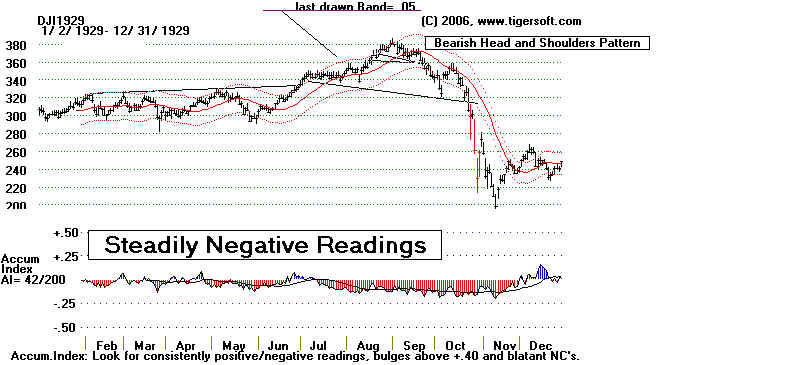
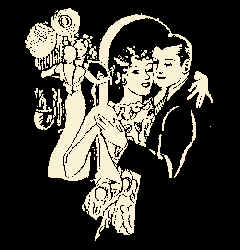 Here is a song from February 9, 1930 by George Olsen,
Here is a song from February 9, 1930 by George Olsen,
called "I'm In The Market For You"
Play It.
(Source: http://www.btinternet.com/~dreklind/thecrash.htm)
I'll have to see my broker
Find out what he can do.
'Cause I'm in the market for you.
There won't be any joker,
With margin I'm all through.
'Cause I want you outright it's true.
You're going up, up ,up in my estimation.
I want a thousand shares of your caresses too.
We'll count the hugs and kisses,
When dividends are due,
'Cause I'm in the market for you.
Could A Crash and A Depression like 1929-1933
Happen Again in the US? Yes!
Absolutely. Though you won't
see this said very often by orthodox economists or
politicians. Keep in mind that the US Government is now much deeper in
debt and the US
has a far worse balance of payments problem than it did in 1929. True, margin requirements
for stocks are 50%, not 10%. But the volume in index related
derivatives is enormous and they are
now factored to double the underlying index's volatility.
The bursting of the vastly
over-extended housing bubble certainly could be the trigger now.
Under-consumption and serious maldistribution of wealth were causes for the 1929
Crash and Depression.
Thus, we have to be concerned about the extent to which middle-class Americans have
exhausted their credit
now. And we must also note the bearishness inherent in the severe
maldistribution of wealth in
America now, where the top one percent own more than the bottom 95%. This
rivals 1928.
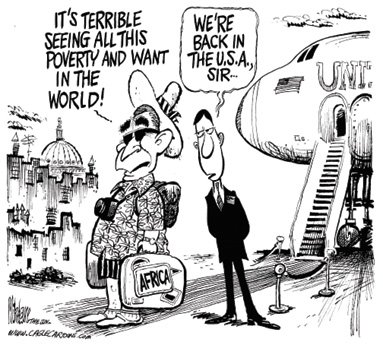
The world bull market has gone
largely up, uncorrected since 2003. A severe world-wide
equities' decline from a lofty, wildly over-bought condition would savage the
buying power
of many, many businesses and consumers around the globe. Illegal
insider selling has been
very pronounced. There will be another round of class-action lawsuits
against CEOs
for dumping their shares on the basis of inside information not yet released
to the general public.
This will hurt investor confidence significantly, just as it did in
2001-2002.
The US Federal Reserve Board has,
except for brief periods, always been much more
interested in finding ways to finance the US federal deficit than guarantee
reasonable
levels of employment. So, I would expect them to be very slow to
lower interest rates.
A "run" on the dollar or a severe oil shortage will make their job
much harder. Too many
mainstream economists are of the Chicago monetarist school. As a
result, they will
keep pushing monetary solutions when more basic problems, like the
3 billion dollar
Iraq blunder. The exporting of jobs and maldistribution of wealth
will go unaddressed
by the Republican Bush Administration. Trickle down monetary
solutions will
not replenish the much diminished purchasing power of middle class and
working
cloass Americans. The quick fixes Bush and
Congress develop will not rescue the
sinking economy. They will deny the severity of the coming crisis
until it is too late.
They will be too little and too late. Their failure will underline
the crisis of confidnce,
but not solve it. Factory orders will be delayed and unemployment
will rise sharply,
thus making matters worse.
When Congress tries
finally to protect American jobs with tariffs, we will be going back to
the economic nationalism of the Smoot-Hawley Tariff of 1930. Moreover,
note how the
Democrats have now abandoned Keynesian fiscal policies as they promise
to balance the
federal budget in order to besmirch Republicans for the massive budget
deficits of the Bush
years. And if the Democrats cut military spending and troops in Iraq,
the multiplier effect will
be working in reverse, as thousands of soldiers become civilians again.
Many
unorthodox economists correctly have pointed out that each US recession
since 1948 has been deeper and required larger and larger deficit
governmental
spending to end the recession. The US deficits are
now so large, it is not clear how,
other than printing billions and billions more paper money, any
Keynesian public
work program could be funded.
Moreover, I doubt if
there is another deep turn-downwards in the US economy,
that we can we really expect the Japanese and Chinese, who have already
financed
so much of the US debt, to allow the US to deliberately further
unbalance the budget
to the extent necessary to jump-start a US economic recovery?
Lastly, civil unrest
would be highly likely, as the difference between the haves and the have
nots in the
US is now back to levels not seen since the 1920s. That
would send even more
US capital overseas.

George
Bush let 9/11 happen, he let New Orleans be destroyed, he has
destroyed Iraq for millions and millions who have no electricity,
no clean water,
no jobs and no schools. In his war on Iraq, Bush has wasted
three trillion dollars
(when all the bills come in). Think how much good that would have
done spent
on American infrastructire and education. Bush is hopelessly
stubborn and even
more arrogant. (I have met him. I know whereof I
speak!) His buddies are
looters. He is just the man to make a bad situation even
worse! Where will
Americans go? Four million Iraqui have left Iraq.
Sources: See http://www.commondreams.org/archive/2007/07/30/2860/
The Depression Years, The DJI
and TigerSoft's Accumulation Index
The
famous Peerless Sell S12 would have kept
allowed someone back in these years to sell short
most of the major tops. This is the same signal
that we use now. It called the top in
October 1987, for example.
1930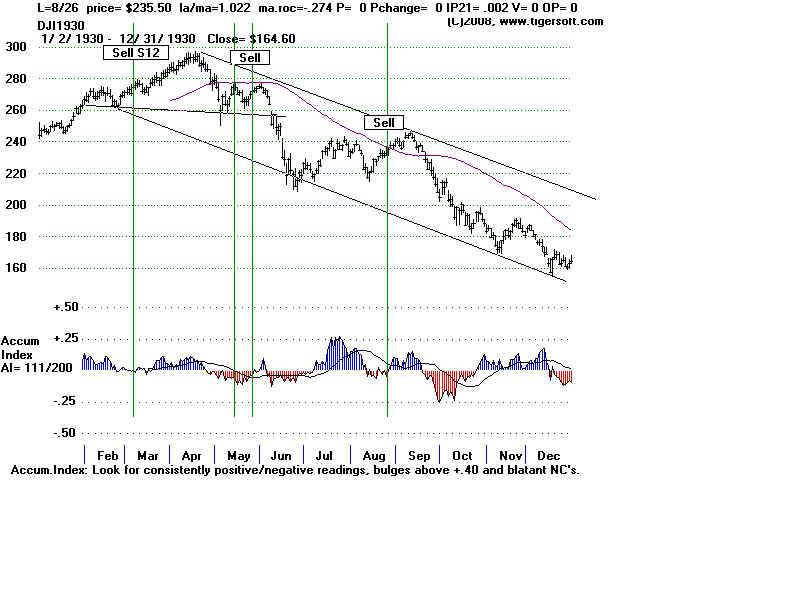 |
1931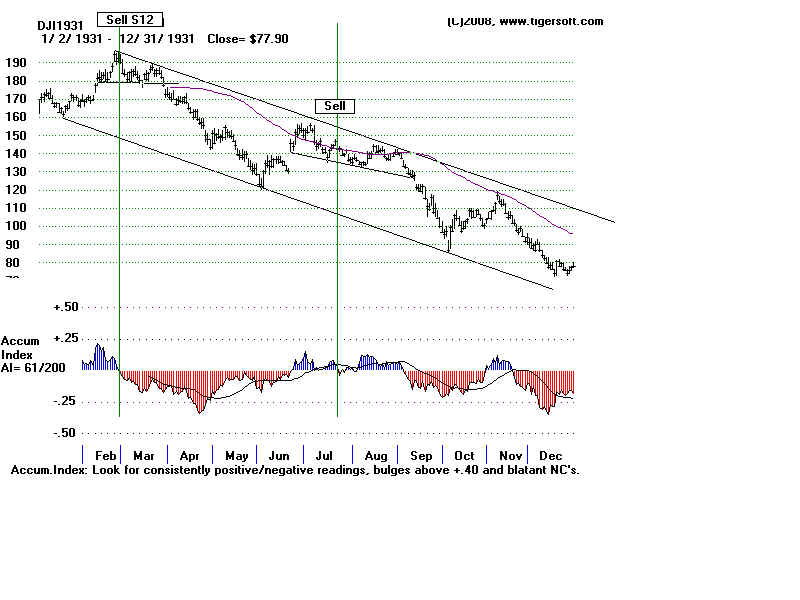 |
1932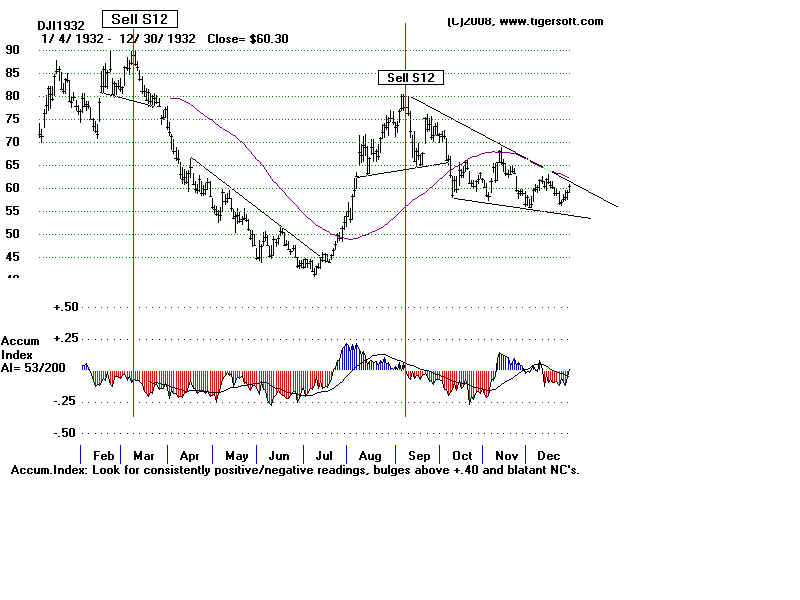 |
1933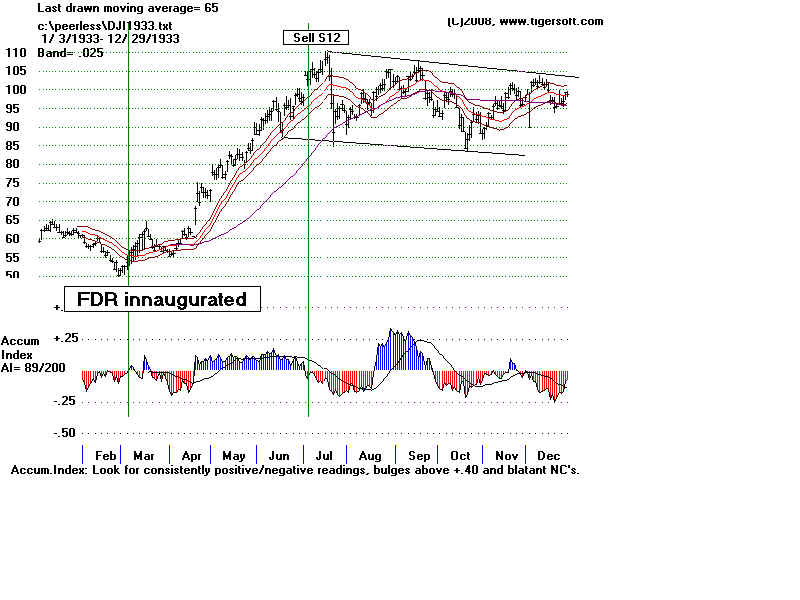 |